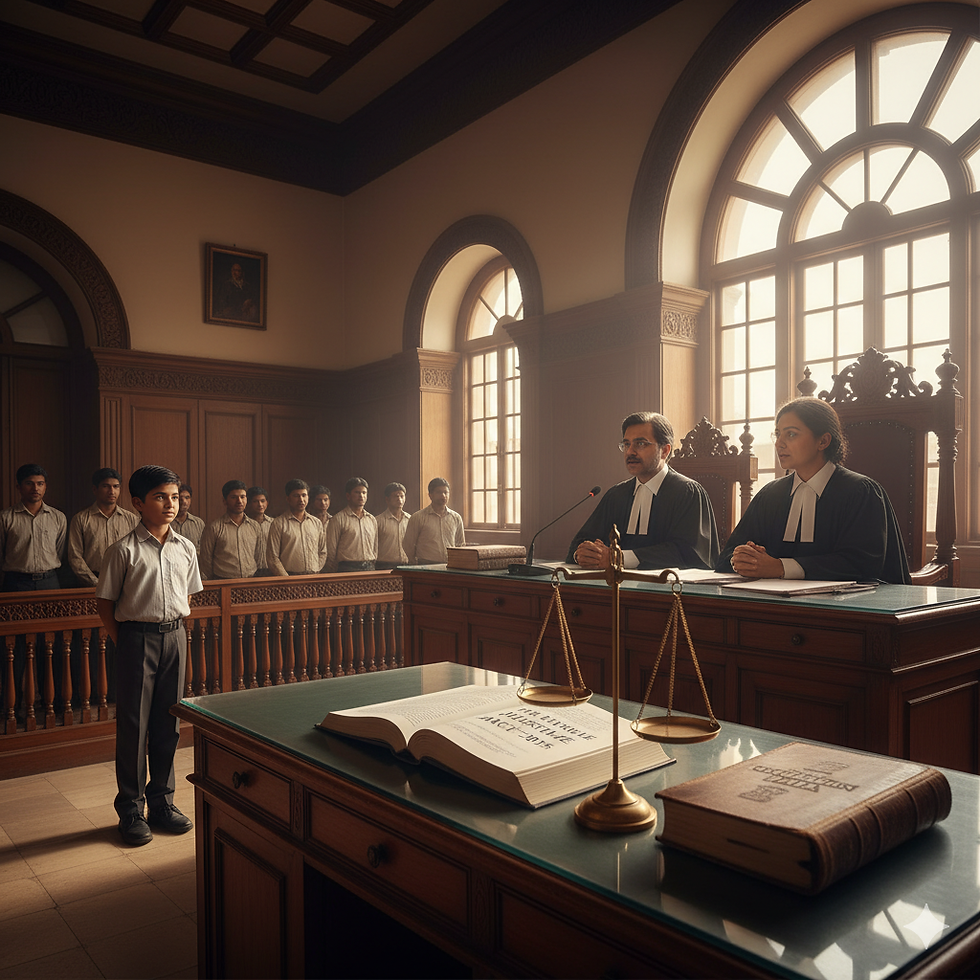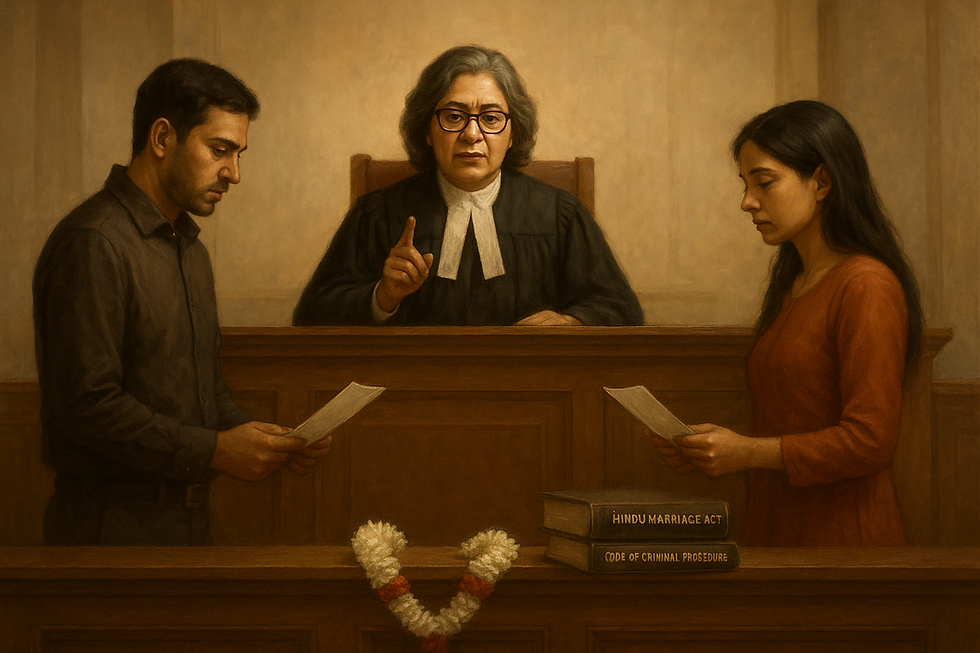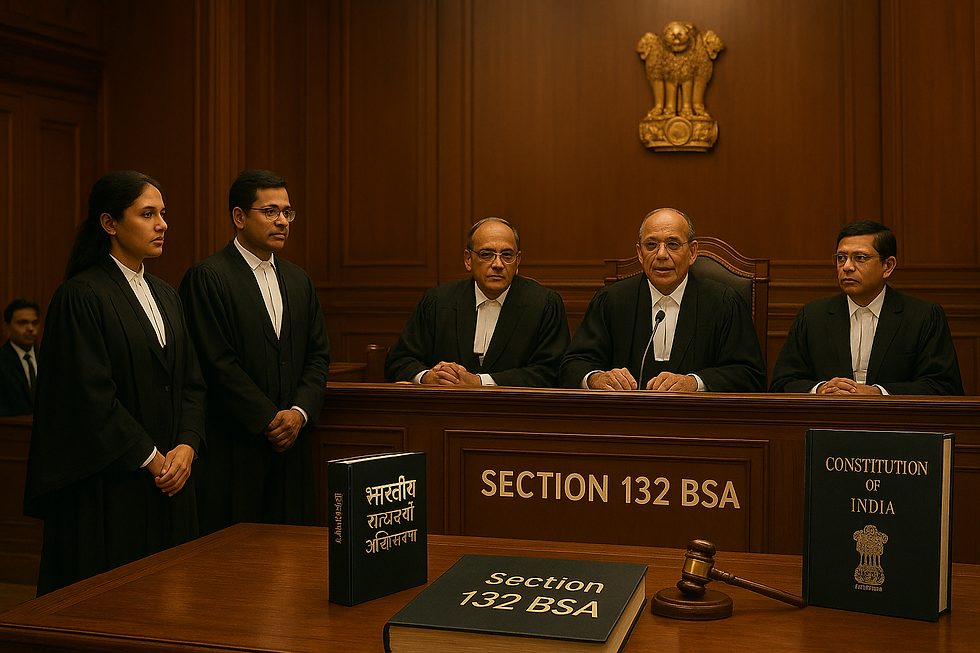Employee Has No Fundamental Right Under Article 14 To Choose Retirement Age: Supreme Court
- Lawttorney.ai

- Jun 9
- 8 min read
Cause Title: Kashmiri Lal Sharma v. Himachal Pradesh State Electricity Board Ltd. & Anr.
Introduction
In a decision that has provoked deep controversy throughout legal, administrative, and HR professionals throughout India, India's Supreme Court has recently determined that no worker has a fundamental right to choose the age of retirement. This landmark decision has far-reaching implications for the interpretation, challenge, and administration of retirement policy throughout the public and private sector workplace. The decision also illuminates the intersection of law and Constitution of service provisions- that is, Article 14 and the doctrine of Fundamental Rights.
But what, precisely, did the Court say, and why is it significant? Let us unpick the story, delve into the jurisprudence, and set out what the consequences are for workers, employers, and future claims.
This case appears quite limited in its facts-only one man challenging a notice of retirement-but it has a larger issue lurking behind it: how far can a worker push to insist on individualized treatment when standing up against public policy? This is the era of employee rights being more and more at the center of equality, inclusion, and dignity at work debates, and this ruling serves as compass and warning.
It isn't so much the question of whether or not one can retire at 58 or 60-it is the question of what is a right, what continues to be a privilege, and what continues to be at the State or employer's discretion. With India's workforce undergoing seismic shifts-from the gig economy ways to the state sector transitions-this judgment puts the chalk to the wall. It holds that except where specifically entrenched in the law, employment benefits such as retirement age can be altered, revoked, and restricted by the rule-making power.
The ruling does not take away protection for employees but establishes limits-particularly in interpreting Article 14 by the prism of service law. It's a wake-up call to others who mix policy generosity with constitutional assurance.

The Case at a Glance
The battle started as an electrician working for Himachal Pradesh State Electricity Board Ltd. challenged his retirement letter. The worker, who suffers from a 60% permanent locomotor disability, argued that he was eligible to work till age 60, referring to a 2013 Office Memorandum (OM) easing the age of retirement for visually handicapped employees. His argument: this benefit should be made available to all individuals with benchmark disabilities under Persons with Disabilities Act.
Though the 2013 OM had previously upheld his stance, it was a dramatic change when the 2019 OM cancelled the previous order to re-impose the retirement age to 58 years. His subsequent request to continue his service as per the 2013 OM was rejected by the High Court finally. This attracted an appeal in the Supreme Court.
Supreme Court's Ruling: No Constitutional Right to Determine Your Own Retirement Age
Delivering the judgment, a Division Bench led by Justice Manoj Misra and Justice K.V. Viswanathan ruled categorically:
"An employee has no fundamental right as to the age at which he would retire."
That single sentence in itself is severe-but that is the substance of the Court's stance. It reiterated that retirement age was a matter of policy, and not a right that was enforceable under the Constitution.
The Supreme Court also made it clear that superannuation termination is not removal as per Article 311(2) of the Constitution, which safeguards civil servants from arbitrary removal.
The Role of Article 14: Equality, Not Entitlement
Article 14 of the Indian Constitution enshrines equality before the law. But does that necessarily mean that all employees are equal in age at retirement? The Court-by no means.
The judgment makes a significant distinction:
Article 14 equality does not always imply equality of results.
It does not assure equal results, particularly where there are policy distinctions which are rational.
Thus, a visually handicapped worker retiring at 60 and a physically handicapped worker retiring at 58 might appear unequal on the face of it-but if there's a policy or legal reason behind the classification, then it's not unconstitutional.
The Indian Court made it clear that in the absence of a compelling case of arbitrariness or discrimination, such policy choices will be subject to judicial review.
The Precedent That Strengthened The Argument
To support their argument, the judges quoted the case of Bhupinder Singh vs. State of Punjab (2010). In this instance, the Court had held that increasing retirement age for visually handicapped staff would logically apply to all benchmark disabilities in disability law.
This set precedent worked in favor of the appellant's appeal-but the Court went on to reject the appeal anyway. Why?
For, as the explanation of the ruling made it clear, the 2013 OM did not alter any rule of law. It was only an executive order. And by virtue of Section 21 of the General Clauses Act, the same power which may issue such orders may withdraw them too.
Hence, the 2019 OM revoking the previous benefit was legal-and employees can't assert a vested right in a benefit which never had legislative sanction.
Between Policy and Right: A Legal Tightrope
At the center of this case is the old conflict between:
Executive discretion and
Judicial enforcement of rights.
Most employees would opine that so long as a policy is launched-even as an OM-it's a right. However, the Supreme Court made itself crystal clear: unless a policy becomes part of statutory rules or service contracts, it is not legally enforceable rights.
Retirement age is not a personal freedom but an employer-defined condition of service. And policies can change. The question is whether changes are implemented:
As prescribed by law,
Non-capriciously, and
Without infringing constitutional guarantees.
The Disability Dimension: Emotional Subtext
While the legal outcome was in favor of the respondent, the Court did award one key point-the 2013 OM had to include all benchmark disabled persons, not just the visually disabled.
Upon seeing that, partial relief was permitted by the Court. It gave the appellant full allowance and consequential compensation until the point when the 2013 OM was actually withdrawn on November 4, 2019. That's a win-not just for the individual, but also for the disability rights movement in India as a whole.
It still falls short of going as far as to declare there is any inherent right to ongoing employment based on disability per se.
This section of the judgment has a profoundly emotional undertone that cannot be ignored. In a country where work opportunities for the disabled are already scarce, the decision sends a two-part message. It supports, on the one hand, that the benefits of policy cannot be granted selectively to a subset of the disabled community while others are left out. It supports, on the other hand, that the same benefits are still policy-based-not legally enforceable rights.
This subtle difference has far-reaching consequences. For many disabled people, job longevity is not solely about income-it's about dignity, inclusion, and meaning. The revocation of the OM in 2019, as much as it is legally justifiable, symbolically undermines this hard-won perception of equality. However, the Court's willingness to hold the appellant's entitlement retrospectively amounts to an increasing concern in judicial mindset.
It underlines the necessity of statutory clarity and all-encompassing policymaking. Rather than ad-hoc office memorandums, all that India's disabled workforce really require are strong, legally enforceable protections incorporated in service rules-so their destiny will not be left in the hands of shifting administrative gusts.
In that regard, the emotional undertone of this case could very well chart more muscular disability legislation in years to come.
Practical Implications: What This Means for Employees
Let's break down what this ruling means to the average working man and woman:
1. You Can't Pick Fight with Retirement Age Under Fundamental Rights
Retirement age is not something public and semi-public sector workers can say is a personal right in the Constitution. It's a term of employment-that's it.
2. Article 14 Is Not a Silver Bullet
Yes, Article 14 shields you from capricious decision-making. But it does not offer you an across-the-board retirement age. So long as there is a fair classification (e.g., varying rules for defense, teachers, disabled workers, etc.), it will hold.
3. Executive Memos Can Be Reversed
Non-statute law-based policies can be withdrawn at any time. This makes a difference in fields like medicine, education, or PSUs, where OMs are typically used to confer temporary benefits.
4. Legal Action Must Be Based on Rules, Not Expectations
You can't sue on expectations or moral bases. Without a rule, contractual provision, or legal right-courts won't act.
Consequences for Employers and Policymakers
This option is not simply addressed to employees. Employers, particularly those in the government, also need to hear.
1. Policy = Power
Employees can decide on service conditions-age of retirement is the example. But with such power comes great responsibility.
2. Make Statutory Support Explicit
The prevention of suit mandates that any modification of service conditions-particularly benefits-has to be codified in service rules and not mere transient circulars or memos.
3. Provide Reasonable Classification
Differential retirement ages for differing categories have to be on reasonable, well-documented reasons. Arbitrary differentiation can still be tested under Article 14.
Retirement and Article 311(2): The Misunderstood Provision
One of the most frequently misunderstood provisions in such a scenario is Article 311(2) of the Constitution. It shields government employees from removal, dismissal, or reduction in rank without inquiry.
And here's the punchline: retirement on attaining superannuation age is not dismissal under this Article.
That is, where your retirement is based on service rules, no problem arises and Article 311(2) is not drawn in. This is required in avoiding technical litigation on the part of employees challenging normal retirements.
Administrative Flexibility and Employee Security
The Supreme Court judgment has tried to balance between:
The flexibility required by government and public departments to deal with human resources, and
The rights of employees, especially members of vulnerable groups such as people with disabilities.
The Court's delicate touch-partially granting benefits to OM withdrawal-is doing this delicate balancing act.
But let's get one thing straight: the message is clear and not ambiguous-you don't have a constitutionally protected right to determine your own retirement date.
Future Outlook: What Happens Next?
The decision has a precedent that will probably impact a range of future or pending cases involving:
Conflicts regarding service extensions,
Executive policy-mandated claims,
Charges of discriminatory retirement practice, and
Article 14-based claims without statutory basis.
Workers, trade unions, and lawyers will now have to tread more carefully and present more substantiated evidence of statutory entitlements-not merely emotional or social justice reasons.
Key Takeaways
Here is a brief TL;DR for those reading this:
Workers don't have the right to choose their retirement age as such.
Article 14 guards against discrimination - but not against inconsistency.
Executive memos and OMs are not irrevocable - they are always withdrawable.
Statutory foundation is required in the establishment of enforceable service rights.
Constitutional values will be enforced by the Court but not intrude into policy-making.
Final Word: A Reality Check for the Workforce
This decision isn't legal doublespeak-it's a wake-up call. Most experts think that benefits once bestowed can never be taken away. This decision wipes out that fairy tale.
What you receive in service isn't necessarily what's yours by right. And that's fine-because governance, just like life itself, is a question of pragmatism, not perfection.
This decision also casts a light on the growing need for workers to be informed-not just of their rights, but of the legal climate within which they work. Blind compliance with circulars or presumption in the lack of legislative backing can lead to unjustified expectations. Familiarity with the law is no longer a lawyer's responsibility alone; it is something that every professional must learn to master in today's uncertain work environment.
Ultimately, the Supreme Court did not merely read the Constitution-it reminded all parties involved that policy is not preference, or assumption of rights.
And that, in the dictionary of law and life, is a lesson well learned.
Empower Your Legal Practice with AI – Join Our Free Webinar!
Are you a legal professional looking to boost your efficiency and stay ahead in a competitive field? Discover the power of Lawttorney.AI – the cutting-edge tool designed to streamline legal research, automate tasks, and enhance productivity.
👉 Don't miss out! Reserve your spot in our FREE webinar and experience the future of legal practice today. Register Now




Comments